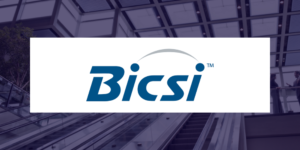Sooner or later, everyone will hear the “Pareto Rule” – also known as the “80/20 Rule” – used in a business conversation. It’s used as shorthand for efficiency and can be described as “80% of outcomes are attributable to 20% of effort”. Examples of this are cited all the time, spanning business functions from sales to customer service, to technology development. Of course, if the previous statement is true, the converse is also true, i.e. 80% of effort is required to achieve the remaining 20% of outcomes!
Volume rollouts are a combination of speed and endurance. You have to sprint along to complete large numbers of jobs every week, yet projects are often so large that you must keep up that pace for months, or even years, to complete the project. Because of this, the ability to engineer efficiency into every aspect of the rollout process must be a core competence of the rollout company.
Some technology rollout companies claim this capability, but we disagree. To use an analogy, they focus on short-term speed (often by using their best resources at the start of a project, only to remove them once under way) which creates the functional equivalent of a bottle-rocket, i.e. something that goes pretty fast for a very short time and then crashes back to earth.
If you are in the volume rollout industry you need speed and endurance, so you have to have something much bigger than that. What you need is a capability that is the functional equivalent of a Saturn V rocket. Let’s discuss how you build that.
First Stage: Build for Speed
At Concert, we deliver technology rollouts at mass scale – many tens of thousands every year – so efficiency has to be the foundation of everything we do, every day. In fact, Concert Technologies was founded to manage a massive technology rollout that a company 200 times our size had completely failed to deliver, so from the very beginning we had to figure out how to be efficient, or die trying.
In those early days, as they worked to deliver an accelerated technology upgrade to tens of thousands of geographically dispersed locations for a very demanding customer, our founders spent countless hours analyzing every facet of the work to isolate efficiencies and build them into a set of processes that enabled us to deliver jobs faster, giving us greater throughput and solving the speed challenge.
Second Stage: Build for Endurance
It doesn’t help you if you can go fast, but waste effort all along the way – or worse still sacrifice quality for speed. In mass-scale rollouts overall project velocity (speed + direction) is key. This is because you not only have to achieve scheduled dates; quality, cost management, and the on-site customer experience are equally important.
To solve for this challenge, we built upon our processes to create a complete system of methodologies that is still the only one in our industry, for managing technology rollouts at mass scale. This system of methodologies, known as Maestro, became the foundation of our operational model. Maestro makes operational consistency, a great customer experience, and quality assurance, deliverables of every rollout we conduct.
Embedded within Maestro are a set of proprietary processes that enable us to ‘normalize’ technology rollouts, so that about 80% (there’s that Pareto number) of every rollout is exactly the same for us, regardless of the customer we are serving, or the technology to be delivered. The remaining 20% or so of variability is made up of technology and customer-specific requirements unique to that project.
The Maestro system and its application to every project we deliver, is what enables us to scale our model to deliver large rollouts at an accelerated pace, without compromising on project quality or consistency of customer experience. This is how we uniquely solve the endurance challenge.
Following our rocket analogy again, this will get us a long way up – further than any bottle-rocket ever could and maybe even to the edge of space – but what do you do when you are conducting large rollouts for multiple customers at the same time? How do you avoid “falling back to earth” because the demands of competing large projects have overrun the capacity of your project management resources?
Third Stage: Escape Velocity!
Again, Pareto can help us here. We measure the entire Maestro system performance (our people, processes, and our proprietary technologies) and use this to create a baseline for its total capacity, which is expressed as a function of the total number of jobs per day that can be run by the Concert project management organization (PMO).
We designed the PMO to be able to deliver our contracted project backlog with every resource operating at about 80% (Pareto again) of total workload capacity. I hear you say “that sounds great, but what happens when a massive new project arrives?”
This is where capacity management kicks in. When we add a new project to our backlog, we forecast the expected job workload for at least the next 60-90 days. If the addition of the new project creates a short-term ‘spike’ of jobs lasting a few weeks, it can be accommodated by allowing resource utilization to rise above 80% for the duration. If the spike will last longer than that, we are looking at a “new normal”, so our capacity management model triggers the next action.
Concert maintains a pipeline of qualified candidates at all times. To complement this, we have built an accredited training facility that takes candidates and turns them into junior (but still productive) PMO resources very quickly, while also beginning them on a 2-year career path towards formal Project Management certification.
This means that, when project workload demands, we can permanently inject incremental project management capacity into our model, mitigating any potential negative effects of a long-term increase in PMO work volume.
To return to the analogy, this approach adds a third stage to our rocket, allowing us to not only escape the earth’s gravitational field, but take us as far into outer space as we need to go. This makes Concert Technologies the Saturn V of technology rollout companies.
The Bottom Line
If you have a very small-scope project that runs for a really small period of time, the ‘bottle rocket’ approach to rollouts *might* work, at least as long as the rollout company doesn’t sign up for another project while they are doing yours! But regardless of that, you’ll always be rolling the dice on the probability that your project will get done before it falls back to earth…
On the other hand, if your project requires deployment in a large number of locations, or is distributed across a large geography, or will take a long time to complete, or maybe it’s just a project that is too important to get wrong, you really have to look for a rollout company with a bigger rocket.
How to Tell Which Sort of Rollout Company You Are Dealing With
Here are questions to help you understand if the rollout company you are talking to is a bottle-rocket:
- How do you deliver volume rollouts at speed?
- How do you conduct QA on every project?
- How do you measure and manage project workload for your PMO?
- How do you balance PMO resources across competing projects?
- Are you an accredited training provider?
If you’d like to understand more about how we do what we do, you can download our white paper – “Lower Project Costs and Time of Technology Rollouts” here. It’s number one in a series of four, which can all be accessed here.



